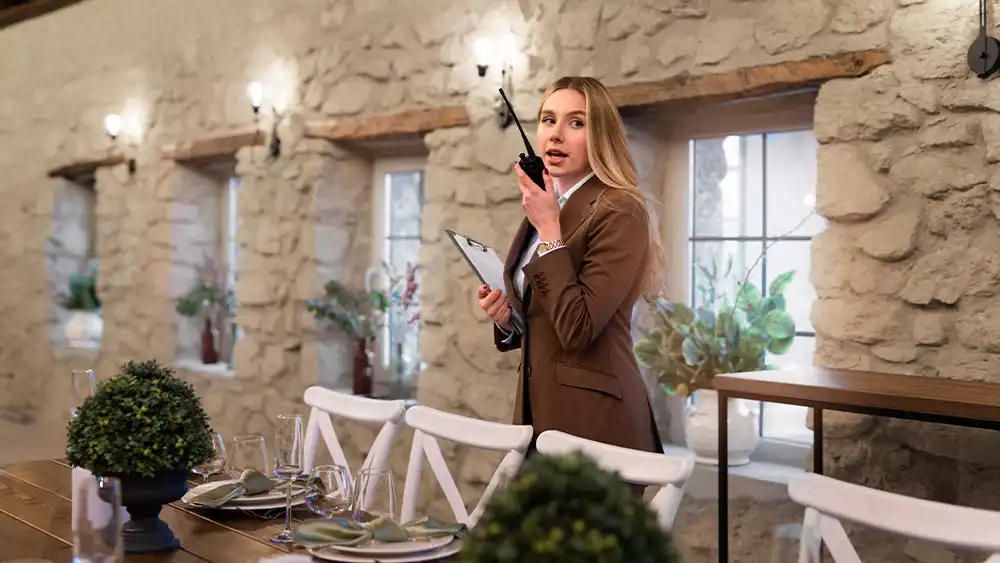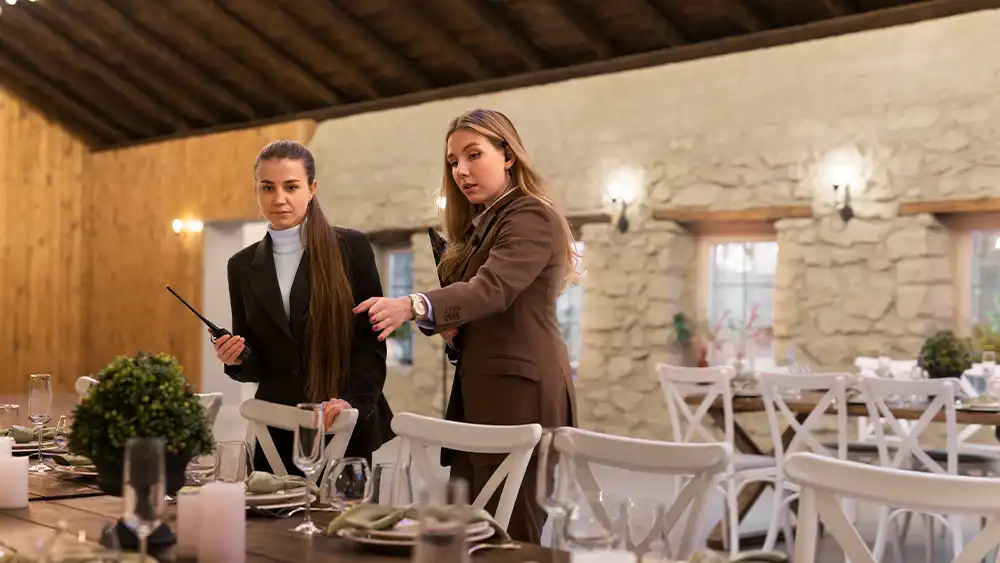Top Workflow Strategies for High-End Event Planners

In the fast-paced realm of high-end event planning, efficiency is key. Each project is a mosaic of intricate details, from selecting the perfect venue to curating a memorable guest experience. With expectations running high and deadlines looming, an organized and streamlined workflow can make all the difference.
Here are some practical strategies to help event planners elevate their workflow, ensuring each event is executed flawlessly and with finesse.
8 Best Tips for Successful Event Planning
1. Comprehensive Planning and Preparation
Preparation is the cornerstone of successful event planning. Begin by outlining a detailed plan that encompasses every aspect of the event. This should include timelines, budget allocations, vendor lists, and contingency plans.
Utilize project management tools like Asana, Trello, or Monday, to keep track of tasks and deadlines. These tools allow for real-time collaboration with your team, ensuring everyone is on the same page and tasks are completed on schedule.
2. Clear Communication Channels

Effective communication is crucial. Establish clear lines of communication with your team, clients, and vendors. Regular check-ins and updates can prevent misunderstandings and ensure that everyone is aligned with the event’s vision and goals.
Tools such as Slack or Microsoft Teams facilitate instant communication and file sharing, helping to keep everyone informed and engaged.
3. Vendor Relationships
Building strong relationships with reliable vendors is essential for any high-end event planner. These partnerships can often mean the difference between a seamless event and a logistical nightmare. Start by thoroughly researching and vetting potential vendors. Look for those with a proven track record of delivering high-quality services and products. When you find a vendor who meets your standards, invest time in building a strong, mutually beneficial relationship.
Regularly communicate with your vendors, not just when you need something. Check in periodically to discuss upcoming projects, share feedback, and express appreciation for their work. This ongoing dialogue helps build trust and loyalty.
Efficient document management can also enhance vendor relationships. Use tools like Smallpdf to easily convert, compress, and share contracts and other important documents. This ensures all parties have access to necessary files in the proper format, streamlining communication and reducing potential misunderstandings.
4. Technology Integration
Leveraging technology to streamline your workflow is a game-changer for modern event planning. Event management software can handle registrations, ticketing, and attendee management, freeing up time for more strategic tasks.
Platforms like Eventbrite, Cvent, and Bizzabo offer comprehensive solutions for managing various event aspects, from marketing to post-event analysis. These tools allow you to automate repetitive tasks, reducing the risk of errors and increasing efficiency.
Incorporating technology into your workflow doesn’t stop at event management software. Customer Relationship Management (CRM) systems are invaluable for managing client relationships. With a CRM, you can track interactions, preferences, and feedback, ensuring personalized service for each client. This personalized approach can significantly enhance client satisfaction and loyalty.
Virtual and augmented reality technologies are also making waves in event planning. Use these tools to create immersive experiences for your clients, such as virtual venue tours or interactive event previews. These technologies can help clients visualize the event more clearly and make informed decisions.
5. Delegation and Team Management

A successful event planner knows the value of delegation and effective team management. Identify your team’s strengths and assign tasks accordingly. This not only ensures that each task is handled by the most qualified person but also boosts team morale by acknowledging individual talents and skills.
Trust your team to handle their responsibilities while providing the necessary support and guidance. Micromanaging can lead to frustration and decreased productivity. Instead, empower your team members to make decisions within their areas of responsibility. This fosters a sense of ownership and accountability, leading to higher quality work.
Regularly review progress and provide feedback to ensure high standards are met. Constructive feedback helps team members grow and improve, while positive feedback reinforces good performance and motivates the team. Schedule regular meetings to discuss progress, address any issues, and celebrate successes. These meetings are an opportunity to keep everyone aligned and engaged.
6. Detailed Budget Management
Budgeting is a critical component of event planning, and managing it effectively can make or break an event. Develop a detailed budget that includes all anticipated expenses and a buffer for unexpected costs. Start by listing all potential expenses, from venue rental and catering to marketing and transportation. Be as thorough as possible to avoid any surprises.
Use financial management software to track expenses and manage invoices. Tools like QuickBooks or FreshBooks can help you stay organized and keep track of your spending in real time. Regularly update the budget to reflect actual spending and make adjustments as needed. This will help you stay within your budget and avoid overspending.
It’s also important to negotiate with vendors to get the best deals. Be upfront about your budget constraints and work with them to find cost-effective solutions. Remember, building strong vendor relationships can also lead to better pricing and service.
7. Client Involvement

Involving clients in the planning process can significantly enhance satisfaction and ensure the event meets their expectations. Schedule regular meetings to update clients on progress and gather their input. This not only keeps them informed but also makes them feel valued and involved.
Use visual aids like mood boards, mock-ups, and virtual tours to give clients a tangible sense of the event’s design and layout. These tools can help clients visualize the event and make informed decisions. For example, a mood board can convey the event’s theme and color scheme, while a virtual tour can showcase the venue’s layout and decor.
Encourage clients to share their ideas and preferences, and be open to their feedback. This collaborative approach helps in aligning the final product with the client’s vision. It also builds trust and strengthens the client relationship.
8. Risk Management
Anticipating and mitigating risks is part of effective event planning. Develop contingency plans for potential issues such as weather changes, vendor cancellations, or technical glitches. Having backup plans in place can save time and reduce stress when unexpected challenges arise.
Conduct risk assessments during the planning phase to identify and address potential problems early on.
Summing Up
Efficient workflow strategies are essential for high-end event planners aiming to deliver exceptional experiences. By emphasizing preparation, communication, technology, and continuous improvement, planners can streamline their processes and ensure each event is a resounding success.
Whether it’s a corporate gala, a luxury wedding, or a high-profile product launch, these strategies provide the foundation for meticulous planning and flawless execution.
Images by Freepik.com

news via inbox
Sign up and never miss out on the latest news and updates at HighStuff



